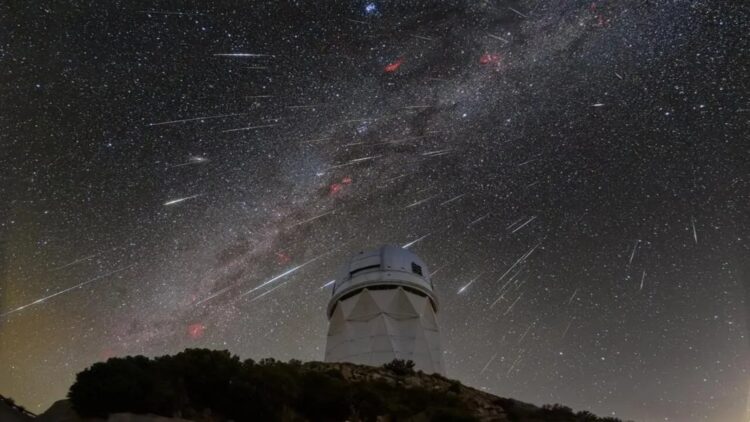Each December, the sky receives a different and unusual light as it comes from meteor showers, confirms NASA. According to astronomers and scientists, this are the most reliable meteor showers that light up our night sky each year. NASA has confirmed the time and we look at this annual phenomenon.
NASA on strange meteor that light the sky
According to NASA and American Meteor Society per Space.com, this annual Geminid meteor shower that gives the sky an unusual light through showers usually runs from November 19 through December 24. The peak is coming overnight on December 13-14.
It is reported that during the peak, over 100 Geminid meteors can be seen per hour under the right conditions and you surely cannot afford to miss this.
What are Geminid meteors according to NASA
In describing the meteors known as Geminids, they are somewhat rare in the sense that they are produced by debris from an asteroid.
The asteroid is known as 3200 Phaeton while most other meteor showers are produced by the leftover bits of comets.
According to the aeronautics company, NASA says the Geminids are one of the best and most reliable annual meteor showers. This factor makes the next month one of the best times to get out at night and catch a glimpse of one of these “shooting stars.”
Will the meteors interfere with each other
While the date, December 13, is the peak for sighting the meteors, a bright waxing gibbous moon will hover above the twins of Gemini on the same night.
This means this will interfere with the peak of this meteoric shower. With this being said, even while the moon lights the night sky, a large number of bright meteors should be visible during the peak.
As their name implies, the Geminid meteor shower originates from the Gemini constellation, Gemini remains visible throughout the night for the northern hemisphere over the month of December, just above the raised arm of the Orion constellation.
It is advisable to get the stargazing app if you need help locating the most distinctive stars. At the same time, it is advised that if you aren’t familiar with the Gemini constellation, now is the perfect time to look for its two most distinctive stars: Castor and Pollux which are relatively known as the “twins” of Gemini.
When to see the Geminids at their best
Forbes also shares an insight into this explaining that the Geminids are named after the constellation Gemini since that’s where its shooting stars appear to come from but Astronomers call it the radiant point.
It is reported that the Geminid meteor shower will last for six weeks this year and peak during the late evening or early morning hours of Dec. 13-14.
These have been sighted since the mid-19th century, making this the most prolific of all the meteor showers in the calendar, with up to 120 shooting stars potentially visible each hour around the peak.
“Geminids can appear in the night sky as bright streaks of mostly yellow, but also white and, if you’re lucky, even green,” reports Forbes.
“They move at a pedestrian 21 miles (34 kilometers) per second), according to the American Meteor Society.
“The maximum number of “shooting stars” per hour it’s possible to see on peak night is 120, making the Geminid meteor shower the strongest of the year, but with a full moon on Dec. 15, there will be a bright moon-bleached sky during the peak.”

